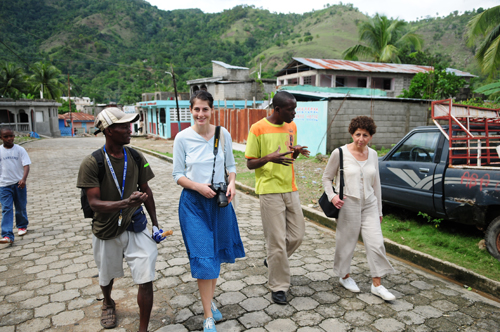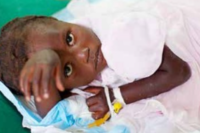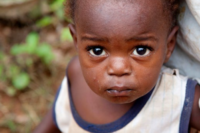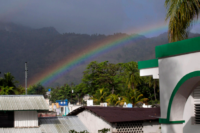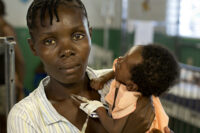Four and a half years ago, I traveled to Haiti to conduct research for my graduate thesis study. At the time I was in the middle of my final year at Pratt Institute in New York earning a Master’s Degree in Creative Arts Therapy.
When given the assignment of coming up with a study question to base my writing on, I reflected on my first trip to Milot, Haiti.
In the summer of 2007, my dad, Tim Traynor, brought me to Milot to volunteer in various capacities in and around Hôpital Sacré Coeur.
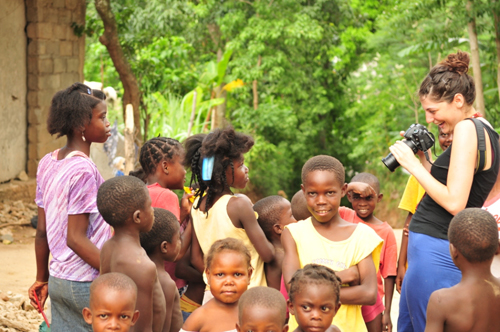 During that trip, I spent much of my time at the Nutrition Center, surrounded by women and children from Milot. I drew with them, danced and sang with them, and pushed them on the swing-set for hours. As I don’t speak Creole or French, all of my interactions with the women and children I met were non-verbal.
During that trip, I spent much of my time at the Nutrition Center, surrounded by women and children from Milot. I drew with them, danced and sang with them, and pushed them on the swing-set for hours. As I don’t speak Creole or French, all of my interactions with the women and children I met were non-verbal.
Laughing and smiling and taking pictures of each other with my camera was how we all communicated. I’d end my days with a cold shower and sense of pride; after all, I was in Haiti, volunteering my time, sweating out what felt like ten pounds of body weight in what I was certain to be 200% humidity, doing good deeds for people less fortunate than me.
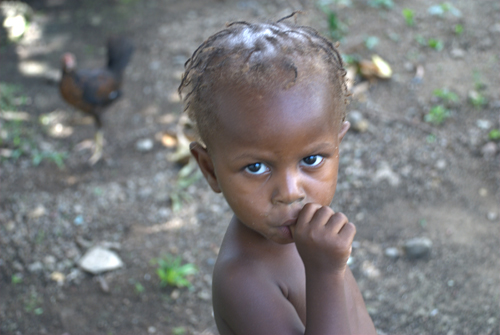 But when I arrived back in the States and thought about on my experience in Haiti, something inside me began to feel awful. I felt a mixture of guilt, appreciation, shame, humility, and sadness. I couldn’t understand why I could walk into a grocery store and have access to as much food as I wanted while there were families starving in Haiti. Why do I need twenty pairs of shoes while others had none? As life went on, I began to forget those women and children . . . I wanted to forget. The people of Haiti’s suffering were too painful to remember. But something kept calling me back to them; the laughter and smiling faces and pictures we all took of one another. I needed to understand more about where I’d been and what made the Haitian people who they are today.
But when I arrived back in the States and thought about on my experience in Haiti, something inside me began to feel awful. I felt a mixture of guilt, appreciation, shame, humility, and sadness. I couldn’t understand why I could walk into a grocery store and have access to as much food as I wanted while there were families starving in Haiti. Why do I need twenty pairs of shoes while others had none? As life went on, I began to forget those women and children . . . I wanted to forget. The people of Haiti’s suffering were too painful to remember. But something kept calling me back to them; the laughter and smiling faces and pictures we all took of one another. I needed to understand more about where I’d been and what made the Haitian people who they are today.
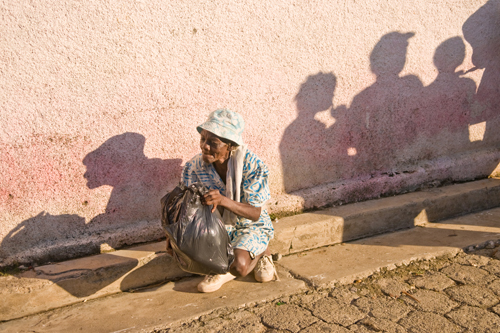 If my experience in Haiti had taught me anything, it was that Haitians are positive, cheerful, and have a strong sense of community, regardless of their lack of resources.
If my experience in Haiti had taught me anything, it was that Haitians are positive, cheerful, and have a strong sense of community, regardless of their lack of resources.
When it was time to write my graduate thesis, I wanted to go back to Milot to find out more about the women and their daily life. My research question was this: What is the experience for impoverished women living in rural Haiti? Because I don’t speak Creole or French I decided to use photography as the main tool or method to communicate with the women to find out more about what was most important them.
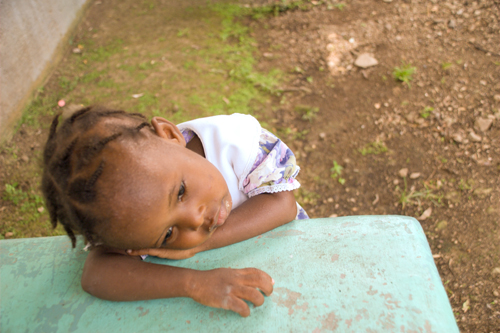 I worked with ten women who visited the Nutrition Center regularly. I gave them each a digital camera and through the help of a translator, taught them how to take pictures with them. I explained that they could take pictures of anything they wanted throughout the afternoon and I would meet with them again at day’s end. I collected their cameras back and told them to meet me in the morning and I would have their printed pictures. That night, as I worked in the Mission House to print out the 200 photographs the women took, something very special happened.
I worked with ten women who visited the Nutrition Center regularly. I gave them each a digital camera and through the help of a translator, taught them how to take pictures with them. I explained that they could take pictures of anything they wanted throughout the afternoon and I would meet with them again at day’s end. I collected their cameras back and told them to meet me in the morning and I would have their printed pictures. That night, as I worked in the Mission House to print out the 200 photographs the women took, something very special happened.
With each photograph, it became clearer to me what was important to these women: family, children, their homes, friends, and neighbors, even livestock.
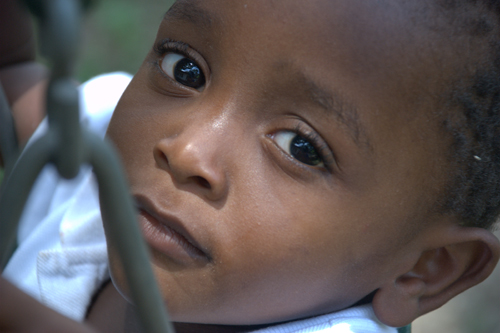 I realized that the lack of resources Milot experiences seemed to strengthen the importance of community.
I realized that the lack of resources Milot experiences seemed to strengthen the importance of community.
The next morning, I met the women to give them their photographs. By then, news of their experience had traveled and there were dozens of people gathered to see the printed pictures. The women were happy to see the pictures of their families, homes, neighbors, etc. But something was still amiss for me. I was still bringing my western ways to this village.
Was it insensitive that I conducted my study using digital cameras?
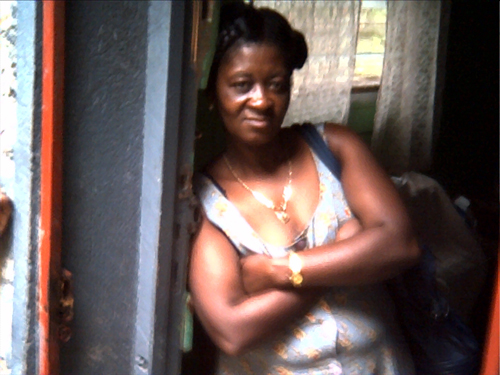 The women had never used cameras like this before. It also felt wrong to me that after the study was over, I took the cameras back from the women. I had come into their village, taught them how to use a digital camera, printed out their pictures for them, and left. Would it have made more sense to leave the women with their own digital camera and printer and photo paper and batteries in a village where electricity was sparse at best? No. I felt like the study was all wrong. I still wasn’t paying enough attention to the culture. Even though I was trying to learn more about the women of Haiti, I was still bringing my American resources and experiences to them. My cultural biases were still clearly coloring my experience and I felt ashamed.
The women had never used cameras like this before. It also felt wrong to me that after the study was over, I took the cameras back from the women. I had come into their village, taught them how to use a digital camera, printed out their pictures for them, and left. Would it have made more sense to leave the women with their own digital camera and printer and photo paper and batteries in a village where electricity was sparse at best? No. I felt like the study was all wrong. I still wasn’t paying enough attention to the culture. Even though I was trying to learn more about the women of Haiti, I was still bringing my American resources and experiences to them. My cultural biases were still clearly coloring my experience and I felt ashamed.
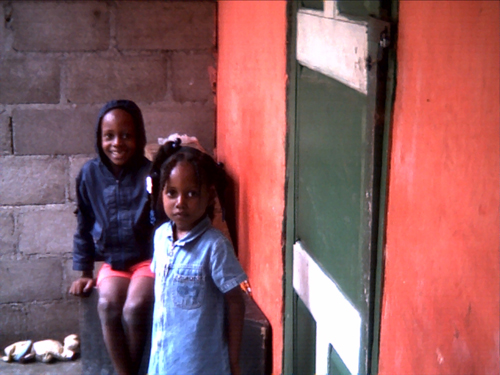 To be honest, writing this article helps. For the past four and a half years, I’ve wondered why I even did this study to begin with. Who did it help? What purpose did it serve? Maybe this article is the reason. Maybe it was all done so that I could share my experience with other volunteers traveling to Milot.
To be honest, writing this article helps. For the past four and a half years, I’ve wondered why I even did this study to begin with. Who did it help? What purpose did it serve? Maybe this article is the reason. Maybe it was all done so that I could share my experience with other volunteers traveling to Milot.
By conducting this study, I learned that photography can provide women living in Milot with a non-verbal way to communicate with people from a different culture about the importance of their children, families, community, and country.
I learned that I should never forget the women and children of Haiti, even if what I see is painful for me.
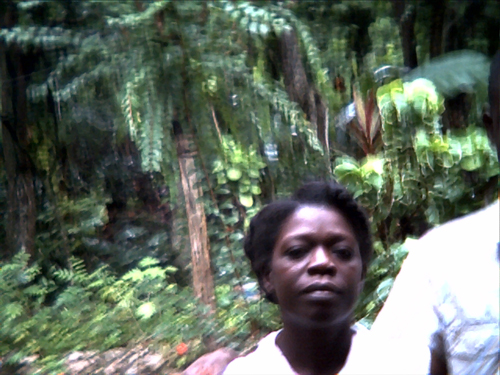
I learned that whenever I visit Milot, I will not be able to change the fact that I’m an American living a very different lifestyle, but that I can be an open vessel when I am there, receiving the culture, history, pain, suffering, joy, and love that Haitians have to offer.
Based on my own experience, I can offer this advice to future volunteers. It is a wonderful thing to travel somewhere and offer your time and energy without pay or reward, but the experience can have a bigger effect on you and the people you are visiting, when you are truly open to experiencing the ethos, values, and differences of this amazing culture.
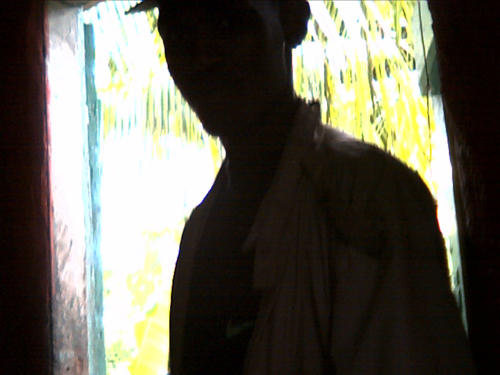
The human experience is a powerful thing, and the connection that we all have can often transcend cultural differences, skin color, and economy. Cultural sensitivity is crucial to volunteering and your understanding of the country you are visiting can make all the difference. After all, you are a guest in Haiti.
Katie Traynor is a Registered Art Therapist and has been a preschool teacher at Blue School in New York City since 2008.


